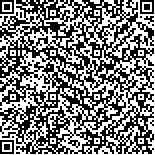| Quote
: |
张茜,王瑞,魏皓月,张硕,黄延芹.健脾消渴方干预2型糖尿病大鼠胰腺组织lncRNA-miRNA-mRNA转录网络分析[J].湖南中医药大学学报英文版,2023,43(9):1643-1652.[Click to copy
] |
|
| |
|
|
| This paper
:Browser 1968times Download 984times |
| 健脾消渴方干预2型糖尿病大鼠胰腺组织lncRNA-miRNA-mRNA转录网络分析 |
| 张茜,王瑞,魏皓月,张硕,黄延芹 |
| (山东中医药大学, 山东 济南 250014;山东中医药大学附属医院, 山东 济南 250011) |
| 摘要: |
| 目的 研究2型糖尿病(type 2 diabetes mellitus, T2DM)大鼠经健脾消渴方干预后其胰腺组织的长链非编码RNA(long noncoding RNA, lncRNA)-微小RNA(microRNA, miRNA)-信使RNA(messenger RNA, mRNA)转录网络变化,从转录组学角度探讨健脾消渴方治疗T2DM的作用机制。方法 选用Wistar大鼠,建立T2DM模型。选取造模成功的大鼠给予健脾消渴方干预8周,行空腹血糖(fasting blood glucose, FBG)测定和ELISA法检测空腹胰岛素(fasting insulin, FINS)、血清胰高血糖素(glucagon, GC)以评估疗效。取胰腺组织进行高通量测序,筛选差异表达的lncRNAs、miRNAs及mRNAs;利用生物信息学方法分析药物作用涉及的关键生物学过程和靶点通路。测序结果采用qRT-PCR法验证其准确性。最后构建lncRNA-miRNA-mRNA三元转录网络及蛋白互作网络。结果 健脾消渴方能降低T2DM大鼠FBG、GC水平,升高FINS。根据测序结果,筛选出模型大鼠有385个DE-lncRNAs和492个DE-mRNAs,健脾消渴方治疗后有354个DE-lncRNAs、590个DE-mRNAs和32个DE-miRNA。最终构建的ceRNA网络包含33个DE-lncRNAs、16个DE-miRNAs及87个DE-mRNAs。GO富集分析和KEGG通路分析显示药物干预的靶点可能涉及糖脂代谢等生物功能以及鞘脂代谢、脂肪细胞脂解的调节、FoxO信号通路、PI3K-Akt信号通路等。结论 健脾消渴方可能通过影响T2DM大鼠胰腺组织的lncRNA-miRNA-mRNA转录网络系统改善胰腺功能、调控血糖,转录网络涉及多条通路及多个生物学过程。 |
| 关键词: 健脾消渴方 2型糖尿病 长链非编码RNA 微小RNA 竞争性内源RNA 中医药 |
| DOI:10.3969/j.issn.1674-070X.2023.09.015 |
| Received:April 27, 2023 |
| 基金项目:国家自然科学基金项目(81974562,81603613);泰山学者工程专项项目(tsqn202211354);济南市科技创新计划项目(202019029);钱秋海全国名老中医药专家传承工作室(国中医药人教函〔2022〕75号)。 |
|
| Analysis of lncRNA-miRNA-mRNA transcription network of pancreatic tissue in type 2 diabetes mellitus rats intervened by Jianpi Xiaoke Formula |
| ZHANG Xi,WANG Rui,WEI Haoyue,ZHANG Shuo,HUANG Yanqin |
| (Shandong University of Chinese Medicine, Jinan, Shandong 250014, China;The Hospital of Shandong University of Chinese Medicine, Jinan, Shandong 250011, China) |
| Abstract: |
| Objective To study the changes of the long noncoding RNA (lncRNA)-microRNA (miRNA)-messenger RNA (mRNA) transcription network of pancreatic tissue in type 2 diabetes mellitus (T2DM) rats after intervention with Jianpi Xiaoke Formula (JPXKF), and to explore its mechanism of action in treating T2DM from the perspective of transcriptomics. Methods Wistar rats were selected to establish T2DM model. The rats with successful modeling were given JPXKF for 8 weeks. The fasting blood glucose (FBG) was measured, and fasting insulin (FINS) and serum glucagon (GC) were determined by ELISA to evaluate the curative effects of JPXKF. Pancreatic tissue was taken for high-throughput sequencing to screen differentially expressed (DE) lncRNAs, miRNAs, and mRNAs. Bioinformatics methods were adopted to analyze the key biological processes and target pathways involved in drug action, and the results of sequencing were verified by qRT-PCR. Finally, the lncRNA-miRNA-mRNA ternary transcription network and protein interaction network were constructed. Results In T2DM rats, FBG and GC increased and FINS decreased, however, this damage can be reversed by JPXKF. According to the sequencing results, 385 DE-lncRNAs and 492 DE-mRNAs were screened out in model rats. A total of 354 DE-lncRNAs, 590 DE-mRNAs, and 32 DE-miRNAs were identified after treatment with JPXKF. A ceRNA network consisting of 33 DE-lncRNAs, 16 DE-miRNAs and 87 DE-mRNAs was eventually constructed. GO enrichment analysis and KEGG pathway analysis showed that these targets of drug intervention may involve biological functions such as glucose and lipid metabolism, sphingolipid metabolism, regulation of adipocyte lipolysis, FoxO signaling pathway, PI3K-Akt signaling pathway, and others. Conclusion JPXKF may improve pancreatic function and regulate blood glucose by affecting the lncRNA-miRNA-mRNA transcription network system in the pancreatic tissue of T2DM rats, and the transcription network involves multiple pathways and biological processes. |
| Key words: Jianpi Xiaoke Formula type 2 diabetes mellitus long noncoding RNA microRNA competing endogenous RNA Chinese Medicine |
|

二维码(扫一下试试看!) |
|
|
|
|


